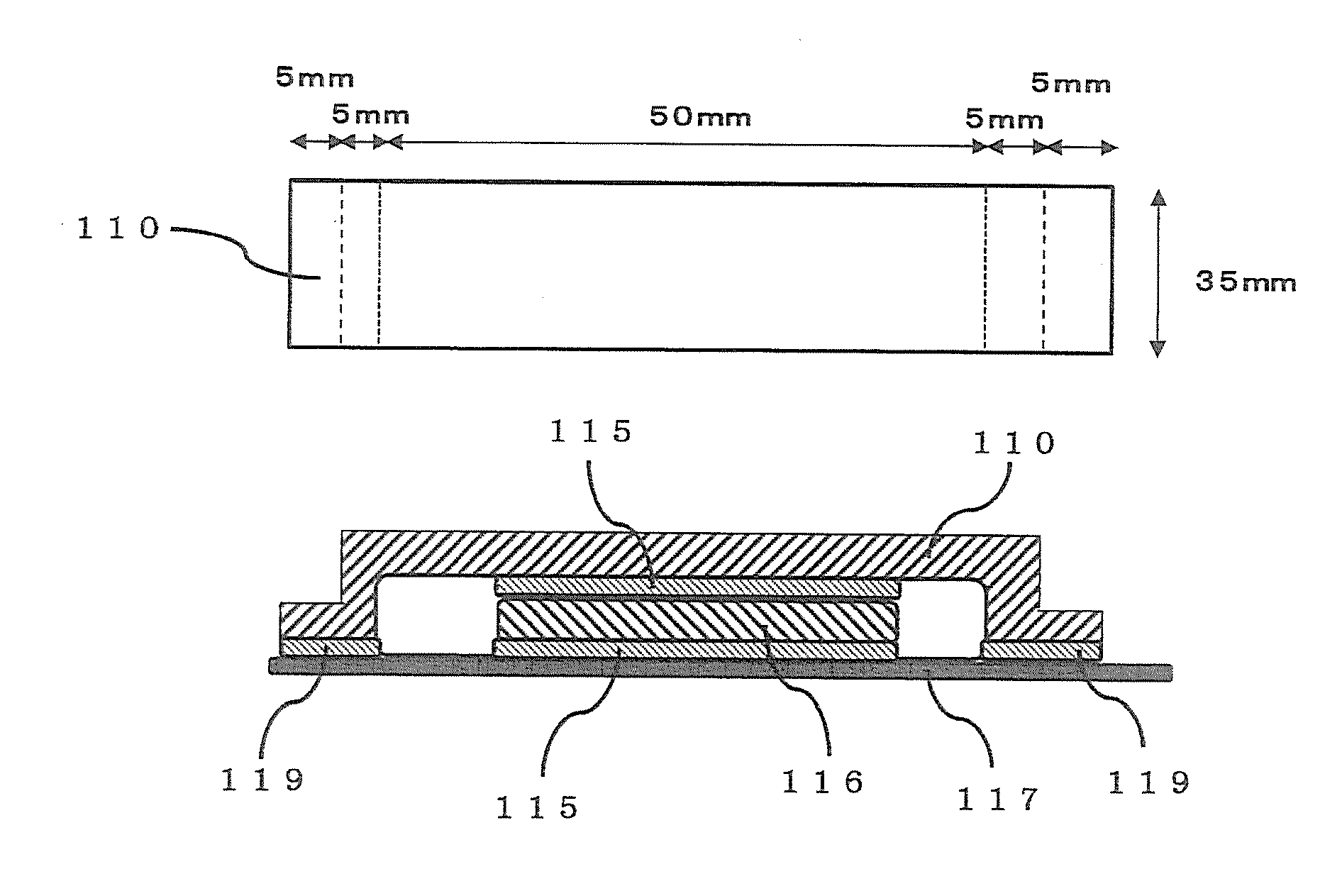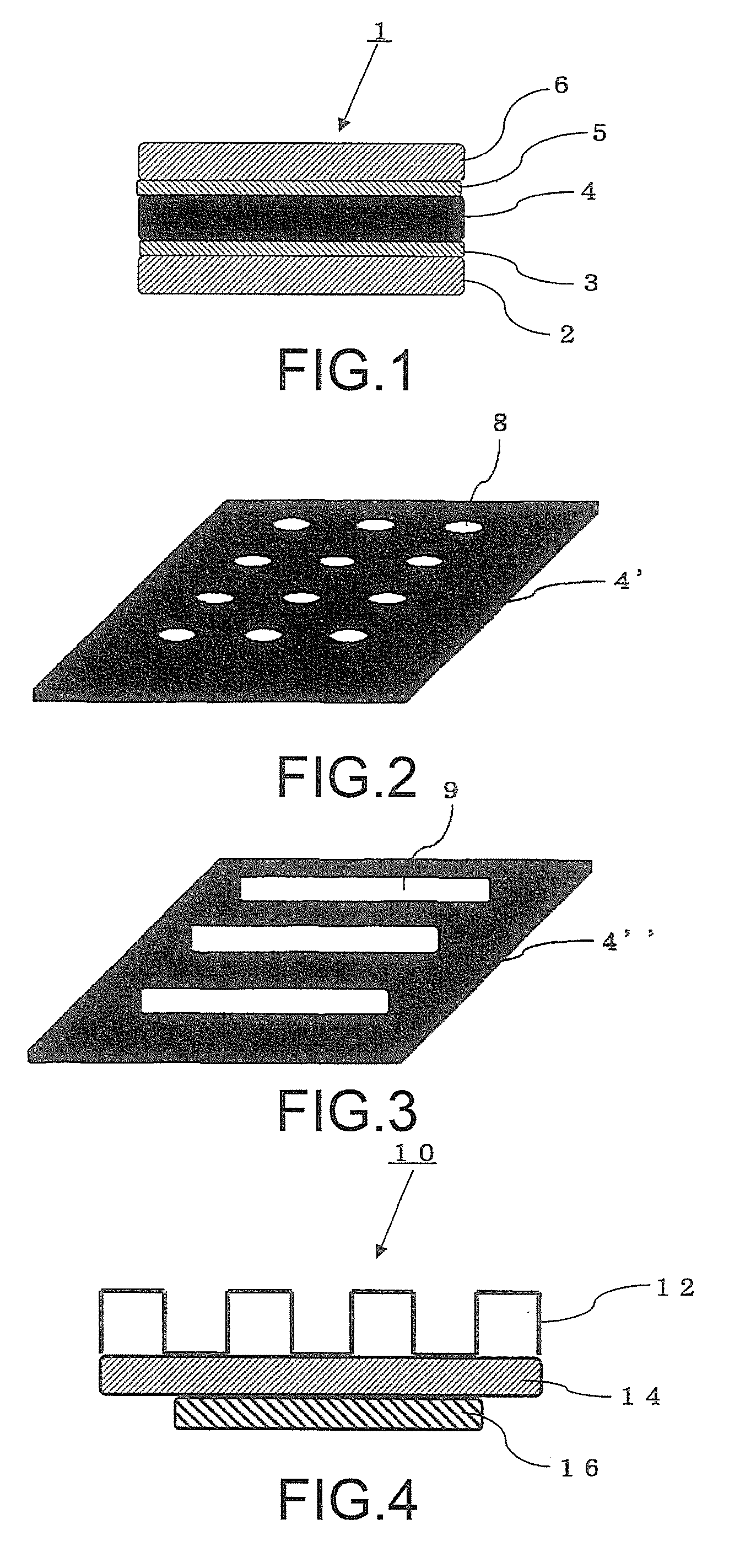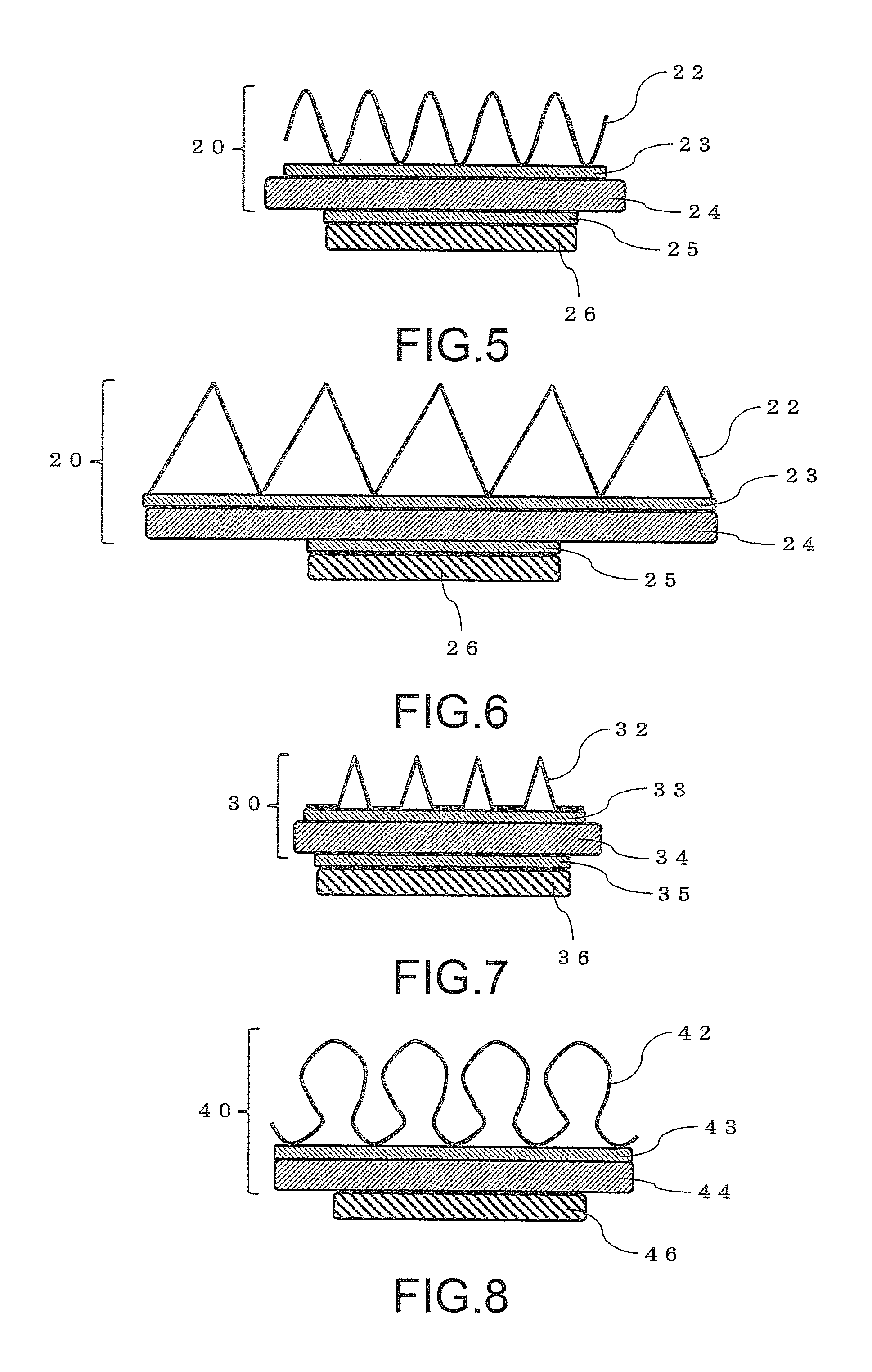Heat sink
- Summary
- Abstract
- Description
- Claims
- Application Information
AI Technical Summary
Benefits of technology
Problems solved by technology
Method used
Image
Examples
example 1
Preparation of Heat Sink
[0233]In a 200 mL three-necked flask, 80 g of cyclopentanone was put, a stirring blade made of fluorocarbon resin was set from above, and the stirring blade was rotated by a motor. A speed of revolution was timely adjusted according to viscosity of a solution. In the flask, 10 g of polyvinyl formal resin (PVF-K) was put using a glass funnel. PVF-K attached onto the funnel was washed with 20 g of cyclopentanone, and then the funnel was removed and a glass stopper was placed thereon. The obtained solution was heated in a water bath set at 80° C. for 4 hours while the solution was stirred to completely dissolve PVF-K in cyclopentanone. The flask after stirring was removed from the water bath to obtain a composition for forming an adhesive layer.
[0234]The composition for adhesive layer formation was applied onto electrolytic copper foil having a size of 300 mm×50 mm and a thickness of 0.012 mm to be 2 μm in a thickness of an adhesive coating film to be obtained, ...
example 2
[0239]A heat sink was prepared, and heat-dissipation characteristics were evaluated in a manner similar to the method in Example 1 except that the copper pipe having the diameter of 5 mm was changed to a 5 mm-square copper square material, and a bending part was formed into a U shape as shown in FIG. 4.
example 5
[0246]A laminate was prepared in a manner similar to Example 2 except that aluminum foil having a size of 100 mm×30 mm and a thickness of 0.02 mm and a natural graphite sheet having a size of 100 mm×30 mm and a thickness of 0.076 mm were used in place of the copper foil and the artificial graphite sheet in Example 2, and a heat-dissipating section was prepared by bending the laminate into a bellows shape to be approximately 30 mm in length in a manner similar to Example 2. A heat sink was prepared by sticking the heat-dissipating section on a magnesium sheet having a dimension of 30 mm×30 mm×1.2 mm by using a pressure sensitive adhesive tape (NeoFix10), and heat-dissipation characteristics were evaluated in a manner similar to Example 2.
PUM
| Property | Measurement | Unit |
|---|---|---|
| Thickness | aaaaa | aaaaa |
| Heat | aaaaa | aaaaa |
Abstract
Description
Claims
Application Information
 Login to View More
Login to View More - Generate Ideas
- Intellectual Property
- Life Sciences
- Materials
- Tech Scout
- Unparalleled Data Quality
- Higher Quality Content
- 60% Fewer Hallucinations
Browse by: Latest US Patents, China's latest patents, Technical Efficacy Thesaurus, Application Domain, Technology Topic, Popular Technical Reports.
© 2025 PatSnap. All rights reserved.Legal|Privacy policy|Modern Slavery Act Transparency Statement|Sitemap|About US| Contact US: help@patsnap.com



